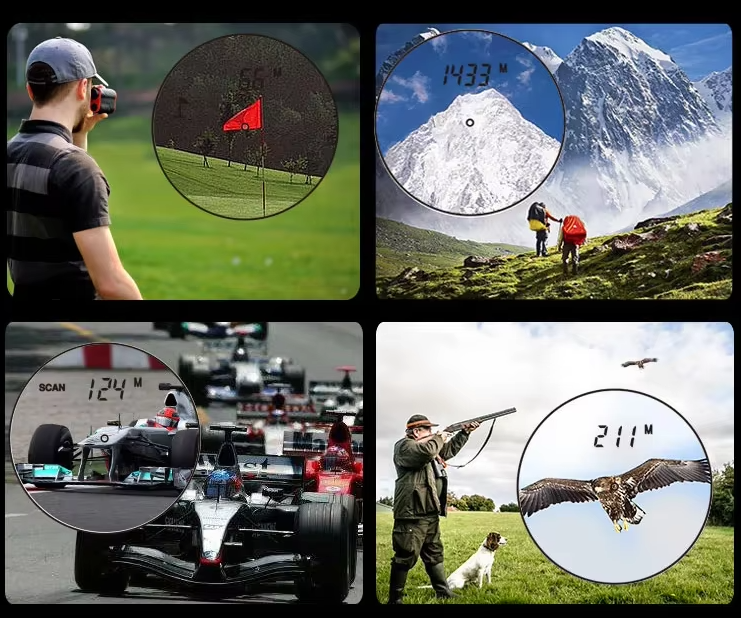The multifunctional rangefinder telescope, also known as the rangefinder telescope or laser rangefinder telescope, is a precision measuring instrument that integrates a telescope system and a rangefinder function. It can not only observe distant targets, but also accurately measure the distance between the target and the observer, and even some models have functions such as height measurement and angle measurement. The following is a detailed introduction to the multifunctional rangefinder telescope:
1. Definition and Principle
The 5000X laser rangefinder altimeter is a high-end measuring tool with the ability to measure general targets from 0 to 6100 meters. The device supports multiple measurement modes, including horizontal distance/slant distance, vertical distance/tilt angle, height difference between two points, etc., and integrates GPS function to provide a positioning accuracy of 3 to 5 meters. The ranging accuracy can reach up to ±0.1 meters (for targets less than 400 meters), and the tilt angle measurement accuracy is ±0.1°. In addition, the 5000X has 8x optical magnification, IP67 protection level, Bluetooth connection function and up to 20 hours of continuous working time.
2. Functional features
Distance measurement function: It can accurately measure the distance between the target and the observer, with a wide range of distance measurement, ranging from a few meters to several kilometers.
Height measurement function: Some models can calculate the height of the target by combining the measurement results of angle and straight-line distance.
Angle measurement function: Using technologies such as electronic compass or inclination sensor, the pitch angle and height can be measured with an accuracy of 0.3° or higher.
Multi-mode measurement: Some multi-functional distance measurement telescopes also support multiple measurement modes, such as rainy days, foggy days, bows and arrows, and meter-yard unit exchange to adapt to different environments and needs.
High precision: The measurement accuracy can usually reach ±1 meter or higher to ensure the accuracy of the measurement results.

3. Application scenarios
Outdoor activities: such as golf, hunting, outdoor adventures, etc., used to measure the distance and height of the target.
Construction engineering: used to measure the height, width and distance of buildings, and assist in construction and design.
Power industry: In power line inspection and maintenance, measure the distance and height of towers and lines.
Military field: used for reconnaissance and mapping to obtain the location and distance information of enemy targets.


